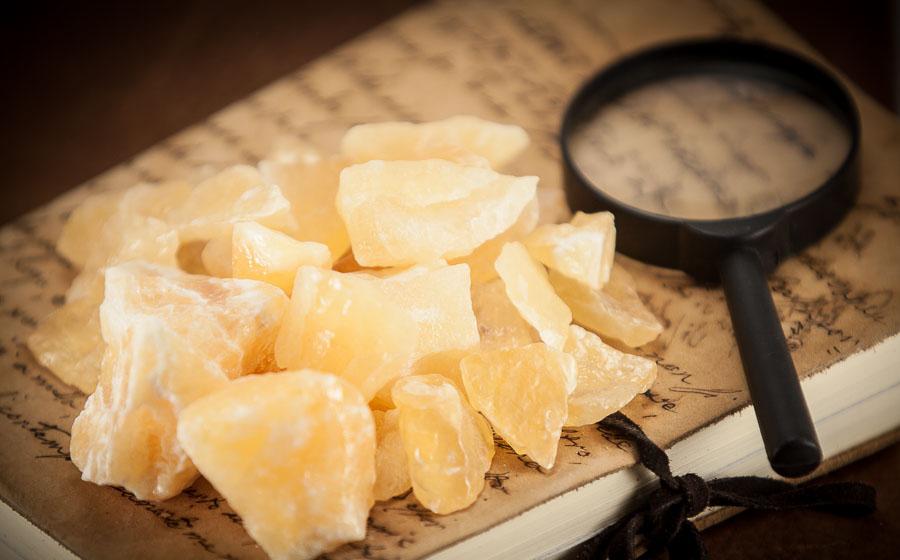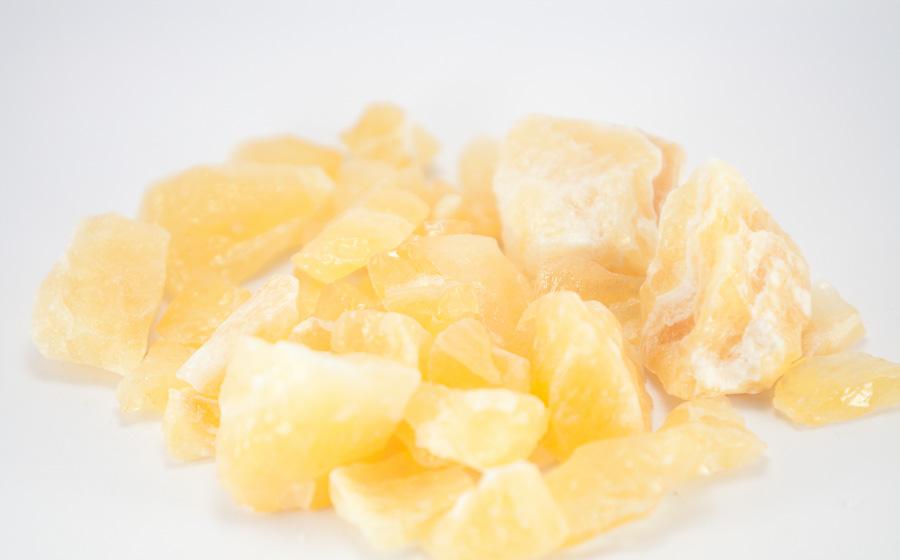You will not be allowed to compare more than 4 products at a time
View compareOrange Calcite Untumbled 1 lb
Orange Calcite Untumbled 1 lb
Estimate delivery times:5-8 days.
Flat Rate Shipping and FREE Shipping on orders more than $100.
About This Product
Orange Calcite – Radiant Stone of Joy & Creativity
Introduction
Like a sunset captured in crystal form, Orange Calcite glows with vibrant citrus hues and a welcoming warmth. Its color palette spans from honeyed gold and peach to intense tangerine and red-orange tones, all suffused with a gentle translucence that makes the stone appear to light up from within. Polished surfaces reveal a waxy, vitreous luster, inviting touch and gaze alike. There is an uplifting presence to this gemstone – simply being near its sun-kissed glow can evoke feelings of comfort and optimism. Luxurious and lively, Orange Calcite effortlessly draws the eye, making a bold yet soothing statement in any space.
Historical & Cultural Context
Treasured by humankind for millennia, calcite has been a cornerstone of art and spirituality since prehistory. In Paleolithic times, powdered calcite (chalk) was used as a white pigment in early cave paintings and rituals. Across ancient civilizations, this mineral found its way into sacred objects and architecture. The Ancient Egyptians carved translucent calcite into exquisite alabaster vessels and statues, associating its radiance with the feline goddess Bast – indeed, the term “alabaster” in archaeology often refers to fine-grained calcite. In Mesoamerica, the Olmec civilization (1500–600 BCE) carved ceremonial cups and figurines from rich orange and red calcite, which anthropologists believe symbolized the life-giving sun. Even the gemstone’s name speaks to its legacy: “calcite” derives from calx, Latin for lime, pointing to its ancient use in lime plaster and pigment.
Over the centuries, Orange Calcite continued to fascinate. Medieval European healers ground it into powders for medicinal potions, hoping its luminous energy could remedy ailments of the eyes. In more recent folklore, this stone earned trade names like “Orange Onyx” and “Orange Alabaster,” reflecting its banded, marble-like beauty and long history as a carving material. From temple sculptures to art deco ornaments, Orange Calcite’s radiant presence has woven itself into culture and craft, celebrated as a material both practical and mystical.
Metaphysical Symbolism
Beyond its visual allure, Orange Calcite shines in the metaphysical realm as a beacon of positivity and creativity. In crystal lore it is closely linked to the Sacral Chakra (the energy center of passion and creativity), where it is used to rekindle joy, sexuality, and creative drive. Practitioners revere this stone for its ability to clear emotional blockages – its vibrant energy is said to wash away lingering fear, sadness, and past trauma, making way for emotional healing and confidence. Like a burst of sunshine, Orange Calcite is known to uplift the spirit, infusing one’s aura with motivation and playfulness. Many believe it stimulates personal power and self-confidence, empowering you to overcome procrastination and self-doubt. In meditation and energy work, it’s an “enhancement stone” that restores equilibrium and enthusiasm – a catalyst for transformation that encourages you to embrace your full creative potential. Whether you seek inspiration, optimism, or a gentle push toward positive change, Orange Calcite symbolizes the joy of unrestrained creativity and the warmth of renewed hope.
Decorative and Luxury Appeal
In addition to its spiritual virtues, Orange Calcite exudes a luxurious decorative appeal that captivates collectors, interior designers, and gemstone lovers alike. Its bold color and translucent glow make it a natural focal point in any setting. Designers often incorporate polished Orange Calcite pieces – from tumbled stones and spheres to smooth towers and pyramids – as eye-catching accents that bathe a room in warm, uplifting energy. By candlelight, an Orange Calcite tealight holder or carved bowl emits a soft amber radiance, as the stone gently filters the flame’s light with a cozy glow.
Skilled lapidaries have long fashioned this calcite variety into elegant carvings and objets d’art. Ornamental cups, figurines, and statues carved from Orange Calcite were prized in antiquity, and today artisans continue that tradition, creating everything from freeform sculptures and heart-shaped stones to modern abstract pieces. Each polished surface reveals swirling bands or cloudy inclusions that add character, making every piece unique. For the collector or interior decorator, a chunk of raw Orange Calcite on a stand can serve as a vibrant natural sculpture – a statement of earthy elegance that complements both classic and contemporary décor. Even jewelry designers are drawn to Orange Calcite’s charm. Though it is a softer gem (Mohs 3) often requiring care, it can be cut en cabochon or set in protective bezels to create striking pendants, brooches, or bead necklaces. The stone’s juicy coloring and waxy shine lend a refreshing, adventurous touch to fine jewelry collections. In the realm of crystal healing, luxury meets wellness: one might place Orange Calcite touchstones or palm stones in spas, yoga studios, or personal sanctuaries to cultivate a serene, rejuvenating atmosphere. However it is displayed or worn, this gemstone brings a sense of sunny opulence – it elevates the aesthetic of its surroundings while also nurturing a joyful, inviting ambiance.
Scientific Profile
Beneath its vibrant appearance, Orange Calcite is a fascinating mineral with a clear scientific identity. As a variety of calcite, it shares the same fundamental makeup and properties of this well-studied carbonate mineral. Here is a breakdown of Orange Calcite’s key scientific characteristics:
-
Composition: Calcium carbonate (CaCO₃). Pure calcite is colorless; Orange Calcite’s color comes from microscopic inclusions of iron oxide (hematite) within the calcium carbonate lattice. These impurities paint the stone in warm hues without changing its basic chemistry.
-
Hardness: 3 on the Mohs scale. This relatively soft hardness means Orange Calcite can be scratched by a knife or even steel tools, so care is advised in handling and jewelry use.
-
Crystal System: Trigonal (hexagonal subclass). Calcite commonly forms rhombohedral or scalenohedral crystals, though Orange Calcite is often found in massive (non-crystalline) form. Perfect rhombohedral cleavage in three directions is a hallmark, meaning it breaks into rhombus-shaped fragments.
-
Luster: Vitreous to resinous (waxy) when crystalline. Massive Orange Calcite often shows a softly glossy, waxy sheen, while well-formed crystals can appear glassy. Cleaved surfaces may also display a pearly luster.
-
Transparency: Typically translucent. Light passes through Orange Calcite diffusedly, giving it that internal glow. High-quality specimens can approach semi-transparent, but fully transparent gem-grade calcite (Iceland spar) is usually colorless.
-
Optical Properties: Uniaxial double refraction (birefringence). When looking through a clear slice of calcite, one might see double images of anything behind it – a result of calcite’s strong birefringence (refractive indices ~1.49–1.66). This property is subtle in opaque orange specimens but is fundamental to calcite’s identity.
-
Reactivity: Effervesces vigorously in contact with dilute acid. A drop of weak hydrochloric acid on Orange Calcite will fizz as the calcium carbonate reacts, releasing CO₂ gas – a classic test for calcite.
-
Primary Sources: Found worldwide, with notable deposits in Mexico, South America, and beyond. Significant sources include Mexico (famous for bright orange masses from Durango), Argentina, Peru, and parts of the USA. Orange Calcite tends to form in iron-rich limestone or hydrothermal environments where hematite is present to impart its color.
-
Other Identifiers: Specific gravity ~2.7 (fairly light weight). Streak is white. Often fluorescent under UV light (some pieces glow pink or white due to calcite’s common fluorescence). It is also allochromatic, meaning the coloration is due to impurities rather than an inherent element of its chemical formula.
Each of these scientific traits adds to Orange Calcite’s character – from the way it glows under a flame thanks to translucency and cleavage, to the way it can split light and fizz with acid, revealing its carbonate nature. This blend of beauty and geology makes Orange Calcite a gemstone that appeals not only to the eyes and heart, but also to the curious mind.
Conclusion
Orange Calcite is truly a gemstone of many facets – aesthetically, culturally, spiritually, and scientifically. Its vibrant oranges and golden lights bring instant cheer, while its storied past connects us to ancient artisans and healers. In metaphysical circles, it stands as a sunburst of creative and emotional energy, clearing negativity and inspiring joy. As décor or jewelry, it offers a splash of luxurious color and a soothing glow that transforms environments. And at its core, Orange Calcite remains a marvel of nature’s craftsmanship: a simple crystal of calcium carbonate elevated by a kiss of iron into a work of art. In every sense, this stone resonates with the energy of light and life, making it a cherished addition to collections and a radiant companion on anyone’s journey toward warmth, creativity, and inner harmony.
Sub total:
$12.49





